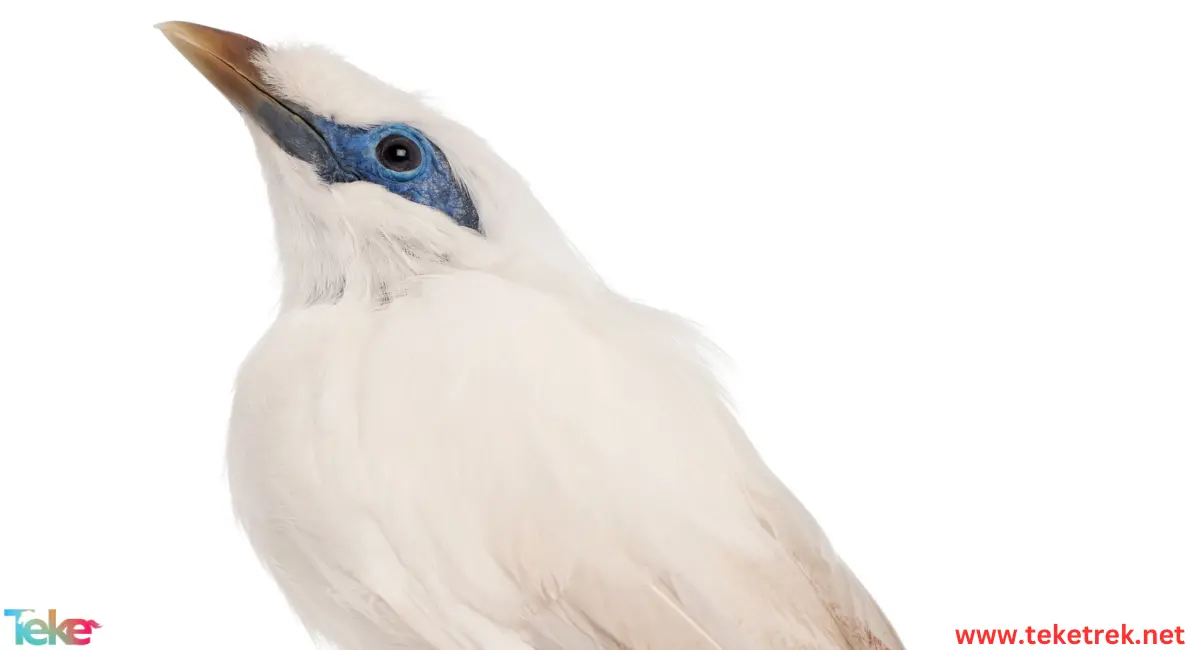The White-necked Crow is the largest of the four Caribbean crow species, and it is native to the island of Hispaniola (divided between Haiti and the Dominican Republic). It was also previously found in Puerto Rico, but it has been eradicated there due to extensive deforestation and hunting.
Let’s learn more about it from teketrek.

External Appearance of the White-necked Crow:
The White-necked Crow belongs to the phylum Chordata, subphylum Vertebrata, class Aves.
The White-necked Crow is a full-bodied bird and is the largest crow in the Caribbean region, measuring 42-46 cm in length.
The general appearance of the White-necked Crow is black, with a bluish-purple sheen in good light. Despite its name, the neck usually appears entirely black, with the eponymous white color limited to the bases of the neck feathers, rarely visible in the field.
The White-necked Crow has a long, deep black beak that gently curves downward towards the tip, giving the bird a large-headed appearance.
The nasal bristles do not completely cover the nostrils, unlike the majority of species in this genus.
The White-necked Crow has a patch of dark gray bare skin behind the eye, and the base of the lower jaw contains a bare strip of skin of the same color.
The iris of the White-necked Crow is characterized by a crimson red color, and the legs and feet are black.
The White-necked Crow often flies high above the forest canopy and soars on thermal currents, unlike the Palm Crow, which rarely rises, if at all.
Habitat of the White-necked Crow:
The White-necked Crow is found in North America, specifically in the Dominican Republic. It inhabits lowland and mountainous forests and tolerates degraded areas used for agriculture.
Diet and Nutrition:
The White-necked Crow is omnivorous. Its diet is typical for most forest crows, consisting largely of fruit. However, a degree of invertebrate food is also consumed, especially when feeding young. Small vertebrate prey has been found in the stomachs of collected birds, including small local frogs and chicks.
Breeding Stages of the White-necked Crow:
The nest is always isolated and built high in a tall tree, although nothing else related to their reproduction has been recorded so far.
How to Protect the White-necked Crow:
The White-necked Crow has been classified as “Endangered” by the International Union for Conservation of Nature due to a severely fragmented and mostly declining population, and many other threats such as hunting, food scarcity and crop failure, habitat destruction for agriculture and timber, and attacks at nesting sites.

The most important frequently asked questions about the white crow.
- Where does the white crow live?
Crows live in many habitats that are spread throughout the world except Antarctica, and they can be found in tundra, in mountain forests, deciduous forests, evergreen coniferous forests, in deserts, grasslands and steppes, on the edges of rainforests, and in cities and villages.
- What does the white crow eat?
Spiders, crustaceans, worms, caterpillars, grasshoppers, cockroaches, locusts, beetles, and weevils. Wild birds, bird eggs, and baby birds
- How many years does the white crow live?
Common crows can be long-lived, especially in captivity or protected conditions; Individuals have lived in the Tower of London for over 40 years, and lifespans in the wild are much shorter, typically 10 to 15 years. The longest known lifespan of a wild crow carrying a ribbon was 23 years and 3 months
- What are the components of white mushrooms?
When looking at the components of the nest, we find that it consists of accumulated leaves from trees and feathers
Dry branches and sticks
- What are the duties of family members?
The female’s primary task is to incubate the eggs until they hatch and feed the young after hatching
As for the male, his main task is to protect the nest from enemies
- Is the white crow rare?
Yes, the white crow is rare.
- Is there a white crow?
Yes, there is a white crow.
In conclusion, the White-necked Crow is a symbol of the amazing wildlife that needs protection and respect. This white bird reflects the rare and mysterious wild beauty in nature, reminding us of the importance of preserving biodiversity and endangered animals. We must always remember that every creature plays an important role in the system of nature, and we must make efforts to protect these beings and their environment as much as possible, so that the world remains a safe place for everyone, including the White-necked Crow and its kin.
المصادر:





